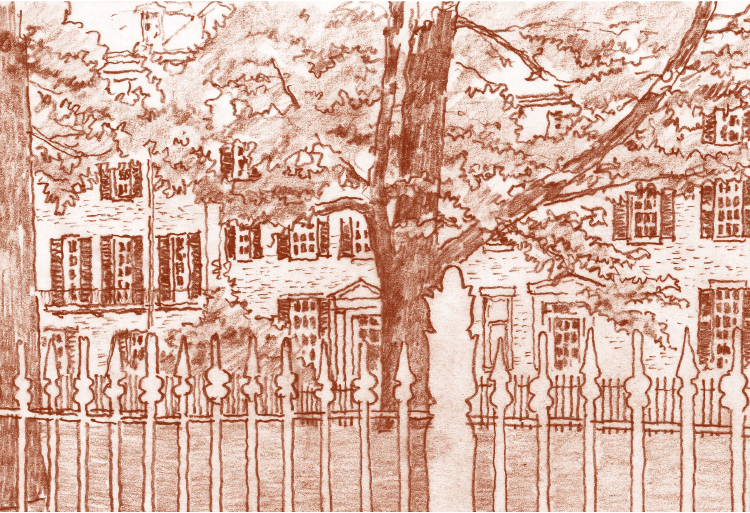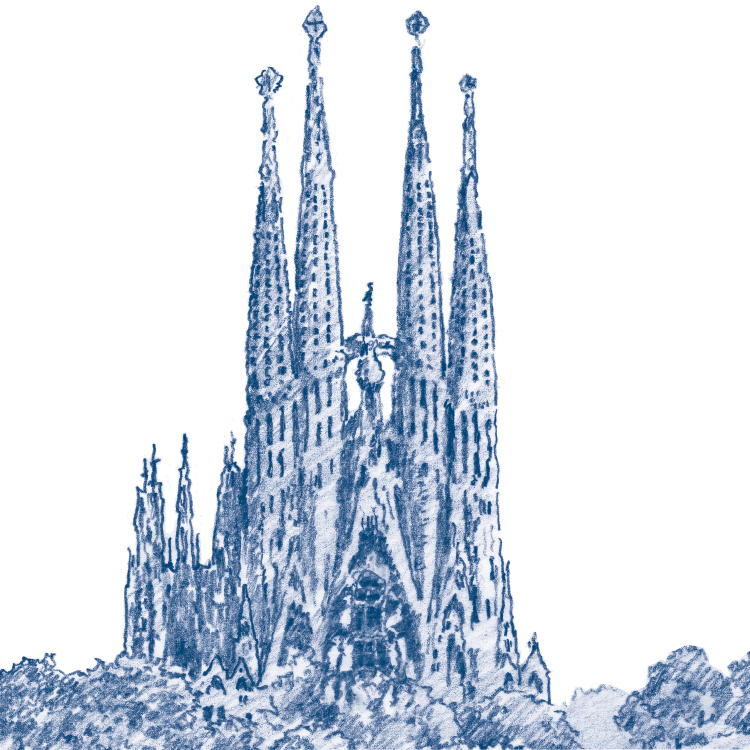
June 30, 2016
Architectural Empathy: Why Our Brains Experience Places Like People
Robert Hart reflects on the human brain’s tendency to perceive buildings and people in similar terms.
Piazza San Pietro, Rome, the welcoming “enfolding arms” of the immensely powerful “mother” church.
This is the second excerpt from Robert Lamb Hart’s new book, A New Look at Humanism – in Architecture, Landscapes, and Urban Design, which aims to apply the insights emerging from the maturing sciences of human life – evolution, ecology, and the neurosciences – to day-to-day practice in design offices. Within a section called “The mind that encounters architecture,” he explores how the human mind accelerates learning by searching for comparisons: ‘how can I understand this place, all this new complexity, in terms of what I already know?’ Then it links our new perceptions into patterns of earlier learning.
In The Architecture of Happiness, philosopher Alain de Botton tells a persuasive story about how we tend to perceive buildings and people in similar terms – and are led by the same in-born empathy into parallel concepts using the same vocabulary. He explores how we tend to experience – his word is transubstantiate – architecture in terms of ourselves; in his words, we call things “happy” that make us happy. In addition to architecture, the idea applies equally to landscapes and cityscapes and to everyday objects that we give personalized names – like houses or boats. The point is not, of course, that the physical places or things themselves have human feelings or qualities. What’s happening is that we explore, interpret, and come to understand them with the same sensory systems, brain structures, experience, memories, and reasoning that we use to detect the qualities and inner thoughts of people. Our encounters may be far less intense, but we respond with the same innate structures of mind, body, and language, to what’s out-there.
Essentially what’s happening is that we’re applying what we’ve learned in the primal relationships experienced within ourselves and with each other – from birth. We tend to observe and judge whether a place is muscular, hard or soft, warm or cold, welcoming or threatening in its posture, competent, graceful or awkward, retiring, boisterous, charismatic, honest. We take pleasure, too, in recognizing and relating a place to our personal values, calling into play the full range of abstractions that we use to position ourselves and each other in society – beliefs, styles, ideas, interests, status, or power. Just as we are quick to read attitudes toward social class, religion, or ideology in human conversation, we find them in the modest good manners of Beacon Hill’s Louisburg Square, or, at another extreme, the militant grandiosity of a crusader’s castle. The halo effect comes into play too, when one outstanding fragment or quality casts its glow, for better or worse, over the whole person/place. Finally, we make emotional judgments: Do we resonate with love and desire, detest, or envy the kind of personality that we read into this place? Does it echo or reflect our values and tastes or reject them? Again, in this sense, we, ourselves, are the primary contexts that give a place “meaning.”

The dignity, humanity, moral leadership, and success of Lincoln, framed in classical virtue.
We recognize our forbears in built environments, too. In a gentrifying historic district or an expanding college campus, we have tended to value designs that allude directly to generations of predecessors on the land, respecting them by blending with and extending the trajectory of their history. And ultimately we may even give to the history that’s symbolized in built places authority over our lives – calling them ancestral or sacred – sacrificing other interests to protect and restore them as National Historic Landmarks, World Heritage sites, or sanctified ground.
Further, we tend to especially admire and mirror in ourselves places where we discover the range of qualities that a human individual has needed to survive and prosper.
We’re in awe of the energy and confident spiritual enthusiasm felt in Gaudí’s work, or the measured, controlled strength and permanence of Roman engineering; the welcoming generosity of space in great estates or urban parks; the authenticity and earnest integrity found in parts of historic cities like Annapolis or an Amish community; or the vitality and optimism of marketplaces or Victorian roof lines; or a dedication to rationality and tradition in a neoclassic courthouse; or the independence of a free-standing home or a compact, cohesive village surrounded by the fertile productivity of farms, forests, or water.
We read relationships between buildings, landscapes, and streetscapes in social terms, too, imagining their dialogues and conflicts and sensing them rejecting or welcoming us, almost like a family member or friend. Then, depending on the scope of our own education, we respond with pleasure when we experience the cultivated, refined skills, creativity, resourcefulness, and intellectual sophistication invested in a place by its designers and builders.
Many of us, too, depending on the priorities we have given to our contending predilections, will admire first the efficient use of resources or the earning power of a place, and others, the contribution to social vitality or cohesion of a community. Others may judge in terms of human morality, too, as John Ruskin did in his eloquent appraisal of the honesty and integrity of Gothic craftsmanship and dismissal of what he saw as the corrupt nature of architecture in the Renaissance, or as early modernists did in abandoning “dishonest” traditional styles.

We experience and respond to places with the same brain, memories, and sensory systems that we use to detect and interpret the qualities and inner thoughts of people. The pride in modest good manners at Louisburg Square in Boston.
This kind of thinking has often been dismissed as a primitive animism or misinterpreted as a “pathetic fallacy.” But, in fact, we can’t avoid thinking in anthropomorphic terms. Our ability to “read” faces and movements in our animate environment is part of our life-or-death biological heritage. And just as we understand other people in terms of what we are ourselves, we attribute our human qualities – what we already know best and experience constantly – to inanimate objects. That’s why we talk about our cars, machinery, golf clubs, or cities in the personal terms we do.
Or think about how architecture and landscapes are used as part of a “branding” strategy. Their design is intended to induce the public to attribute essentially human qualities – competence, creativity, glamor, refined taste, caring – to the products and culture, the identity, of a corporation. And it’s those qualities that we “buy” to enhance our own perceived
identity.
In other words, those human qualities we identify in our surroundings or in products are not out-there, but in-here. What’s happening is that we are experiencing a place – the “what it is like to be there” – by infusing it with life and asking, in de Botton’s terms, What kind of human being would this place be? These kinds of judgments consciously and unconsciously permeate language, beliefs, and, of course, a world of “figures of speech – analogies, allusions, and metaphors.
They are a way that a mind and body work. These kinds of judgments permeate our vocabularies, and we do not even try to describe experience or response to a built environment without them.






